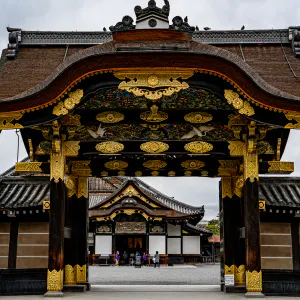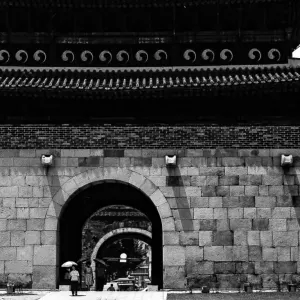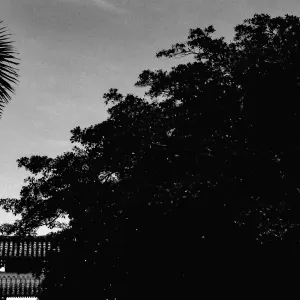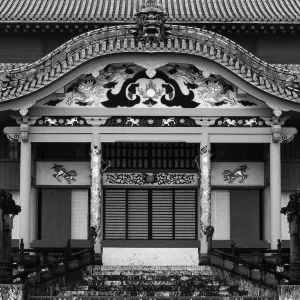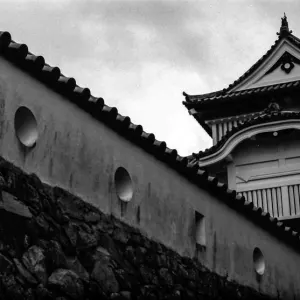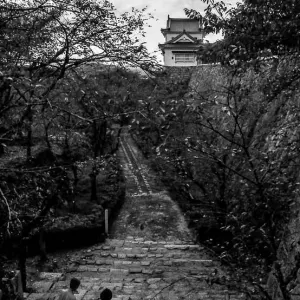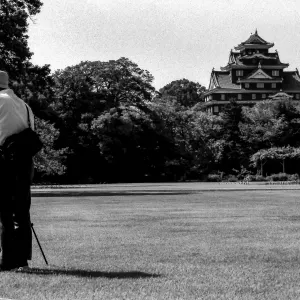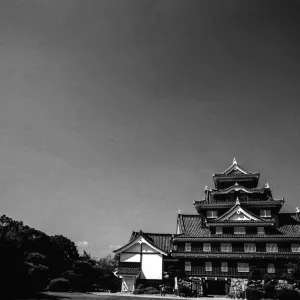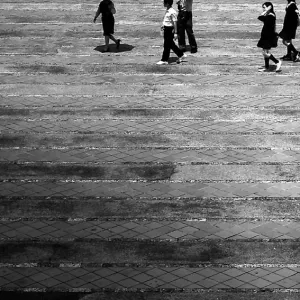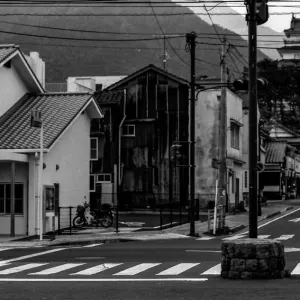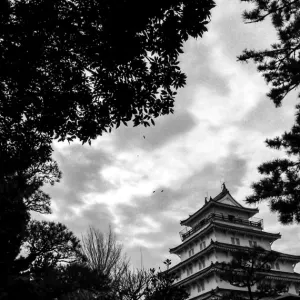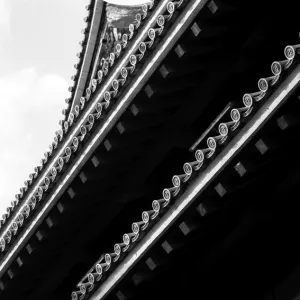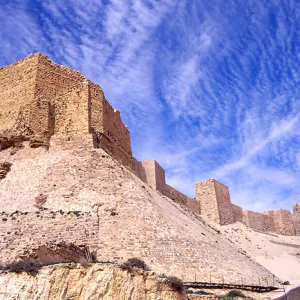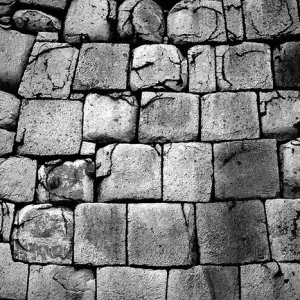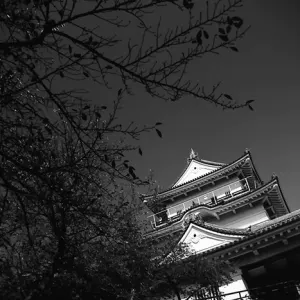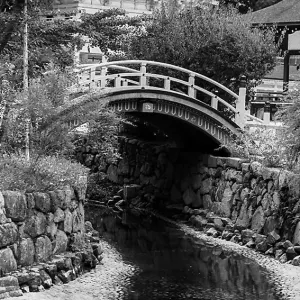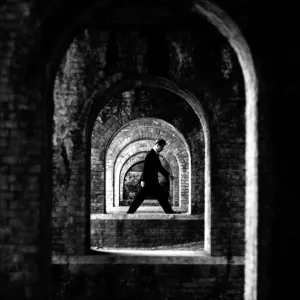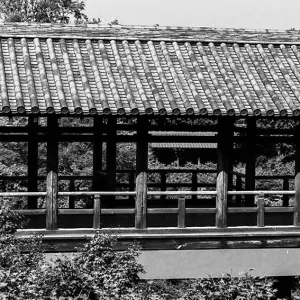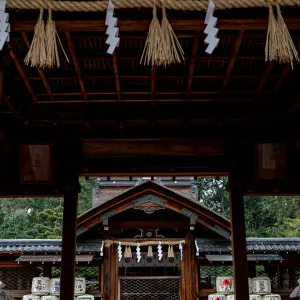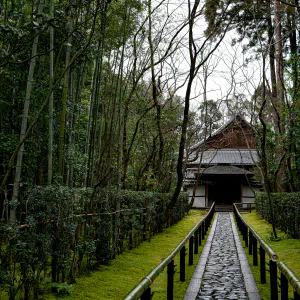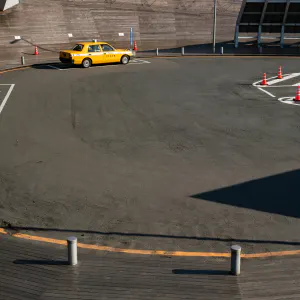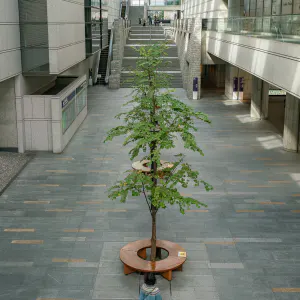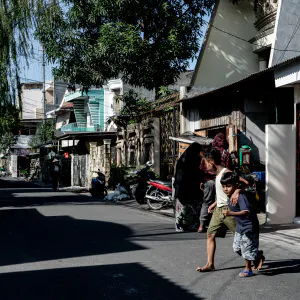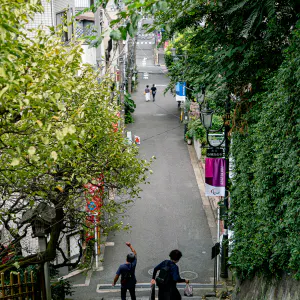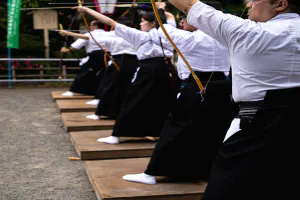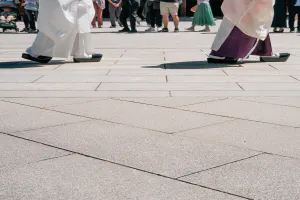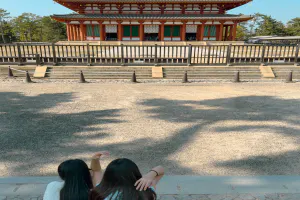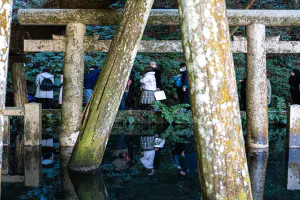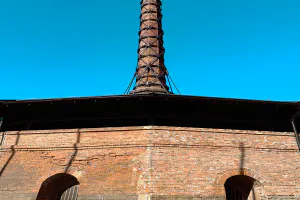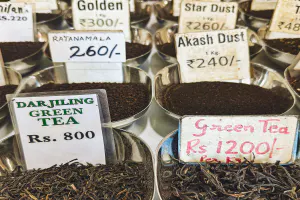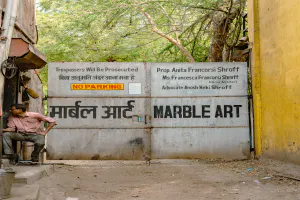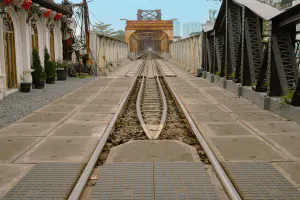The gate at the end of the bridge that crosses over to the Honmaru has a turret
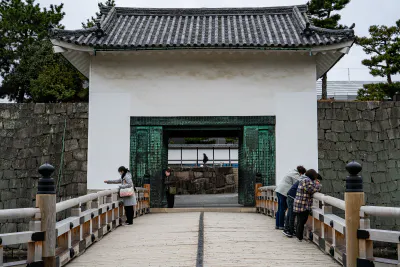
Nijo-jo Castle has two moats, an outer moat and an inner moat, and to get to the Honmaru Palace from the Ninomaru Palace, you have to cross the inner moat. In other words, the Ninomaru Palace could be reached by crossing the outer moat, but the Honmaru Palace had to be reached by crossing both the outer and inner moats. Even though the current Honmaru Palace was built from the former Katsura-no-miya family residence and has nothing to do with the Nijo-jo Castle of the Tokugawa family, the location of the Honmaru Palace is still the most important part of the castle for structural reasons.
There are two bridges across the inner moat to the Honmaru Palace, and the bridge in this photo is the East Bridge, one of them. Although Nijo-jo Castle, built by Ieyasu Tokugawa, has never been attacked, it was built with the actual battlefield in mind. There are only two bridges leading to the main castle, and the gate across the bridge has a turret in case of attack.
The wooden bridge in this photo was built to prevent the enemy from crossing the bridge in times of war. The bridge was dropped, and the doors covered with copper plates of the turrets were closed in preparation for firearms. Of course, in modern times, it would not be necessary to drop the bridge to prepare for firearms attacks. Tourists on the bridge were also carefree, looking down at the carp swimming in the inner moat.
| Apr 2021 ARCHITECTURE KYOTO | |
| BRIDGE CASTLE GATE KYOTO CITY |
PHOTO DATA
No
11880
Shooting Date
Feb 2020
Posted On
April 18, 2021
Modified On
August 24, 2023
Place
Nijo-jo, Kyoto
Genre
Architectural Photography
Camera
SONY ALPHA 7R II
Lens
ZEISS BATIS 2/40 CF
